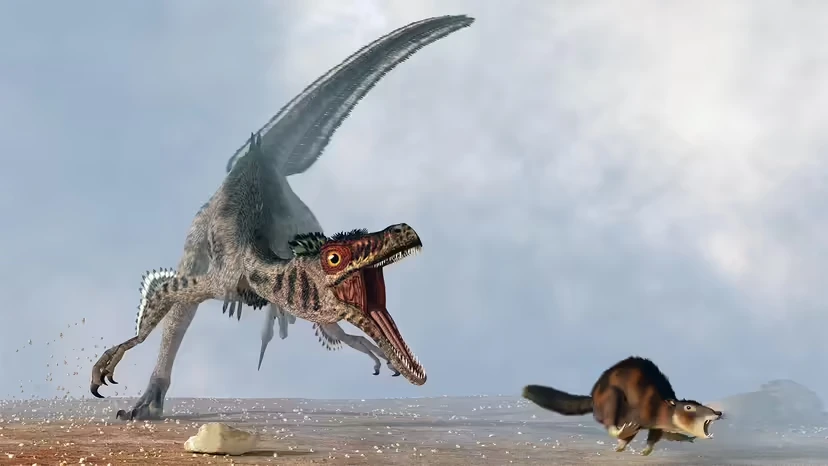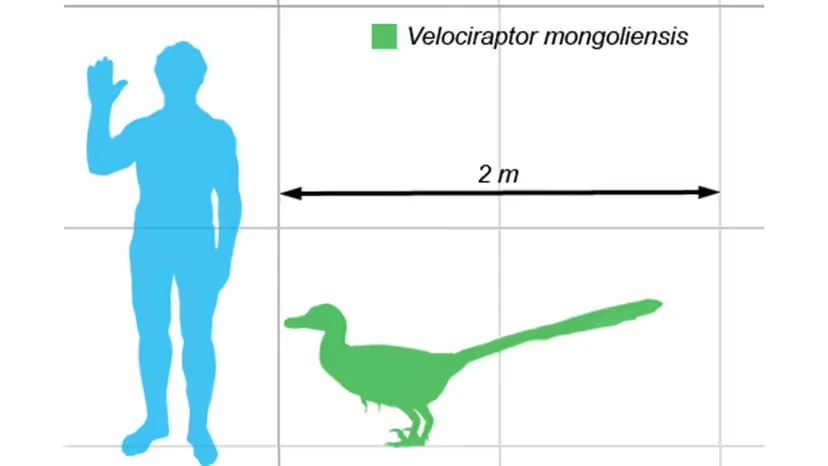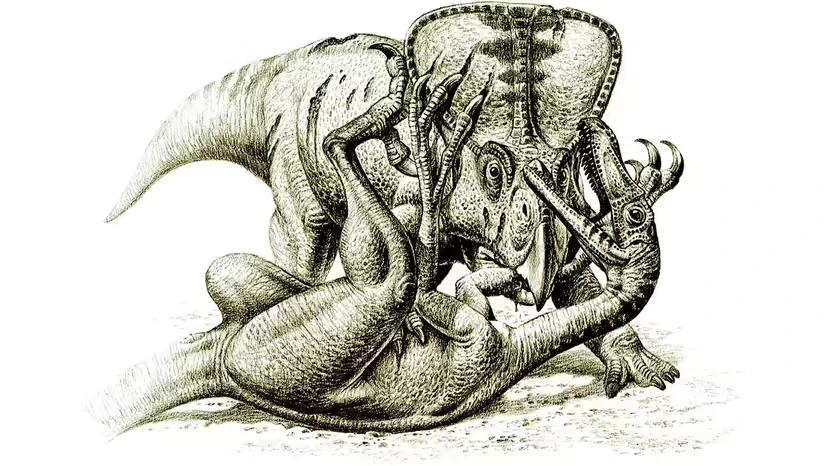Quick Takeaways
Small body, big weapons: Velociraptor was about turkey-sized, with a famous sickle-shaped claw on the second toe of each foot used to pierce and pin prey.
Feathered, not scaly: Evidence of forearm quill knobs shows it had feathers, making it closer in appearance to birds than to a giant reptilian predator.
Smart opportunist: With keen balance and hearing, Velociraptor was likely an active hunter that also scavenged when it could.

In the 1920s–30s, American explorer Roy Chapman Andrews led fossil expeditions across Mongolia’s Gobi Desert, where teams collected the small, clawed theropod later named Velociraptor mongoliensis by Henry Fairfield Osborn (1924).
Decades later, Polish paleobiologist Zofia Kielan-Jaworowska oversaw the legendary “Fighting Dinosaurs” discovery (1971): a Velociraptor and a horned Protoceratops locked in combat, likely buried by a sudden dune collapse. The pose—raptor’s foot claw pressed to the ceratopsian’s neck—remains iconic evidence of predatory behavior.
The “raptors” in Jurassic Park are modeled largely on Deinonychus, a bigger North American dromaeosaur, even though the script uses the name Velociraptor.
| Feature | Velociraptor | Deinonychus |
|---|---|---|
| Length | ~1.85–2.65 m (6–8.7 ft) | ~3.3 m (11 ft) |
| Hip height | ~0.7 m (28 in) | ~1.0–1.2 m |
| Mass | ~38 kg (84 lb) | ~70–80+ kg |
| Where/When | Mongolia & China, Late Cretaceous (74–70 Ma) | N. America, Early Cretaceous (~115 Ma) |
Bottom line: the real Velociraptor was smaller, lighter, and much more bird-like than the movie villains.

Hyper-extendable “killing” claw: The second toe could cock upward and then swing down to stab and grip. Biomechanics and robotic models suggest it functioned as a penetrating anchor for pinning prey rather than slicing it open like a knife.
Reinforced yet flexible tail: Stiffening rods in the tail vertebrae gave stability for balance and quick direction changes, but fossils show a gentle curve—so not a rigid “pole.”
Feather evidence: Quill knobs on the forearm confirm feather attachment. Velociraptor didn’t fly; feathers likely aided display, thermoregulation, and maneuvering.
CT-based studies of the skull and inner ear indicate excellent balance, broad hearing sensitivity, and a strong vestibulo-ocular reflex (steady gaze while the head moves). Ecologically, Velociraptor fits an active-predator-plus-scavenger niche: it hunted when possible, scavenged when profitable.

Direct gut content: One specimen preserves pterosaur bone fragments inside the torso—likely scavenged.
The “Fighting Dinosaurs” duo: A snapshot of predation—hand on skull, foot claw to neck, and the raptor’s other arm clamped in Protoceratops’ jaws—points to close-quarters grappling and pin-and-bite tactics.
Time: Late Cretaceous (approx. 74–70 million years ago), well after Deinonychus.
Place: Arid and semi-arid deposits of Mongolia and northern China, consistent with open, dune-rich landscapes.
Human-sized? No—hip height under 1 m; think large bird + turkey in footprint.
Naked skin? No—it had feathers on the arms (and likely elsewhere).
Belly-slasher? The big toe claw was more a hooking/holding weapon for subduing prey.
Pack hunting like wolves? There’s no strong direct evidence for coordinated pack hunting in Velociraptor; the famous duel fossil proves it could kill solo.
Scientific name: Velociraptor mongoliensis (and close relatives)
Clade: Theropoda → Dromaeosauridae
Size: ~1.85–2.65 m long; ~0.7 m hip height; ~38 kg
Key traits: Hyper-extendable second-toe claw; feathered forearms; stiff-but-flexible tail
Epoch & area: Late Cretaceous, Mongolia/China
Lifestyle: Active predator plus opportunistic scavenger; agile, sensory-sharp
How did Velociraptor actually kill prey?
By pinning with the second-toe claw and body weight, pressing and gripping rather than slashing, then biting to finish.
What did it eat?
Likely small to mid-sized vertebrates, plus carrion when convenient—evidence includes pterosaur remains in a raptor’s torso.
Did Velociraptor hunt in packs?
There’s no definitive proof of coordinated pack hunting. Evidence supports effective solitary predation and opportunism.
Forget the on-screen monster: the true Velociraptor was a feathered, nimble, precision hunter, engineered for balance, grip, and agility. Small in stature, yes—but exquisitely adapted for the Late Cretaceous game of survival.
animal tags: Velociraptor
We created this article in conjunction with AI technology, then made sure it was fact-checked and edited by a Animals Top editor.